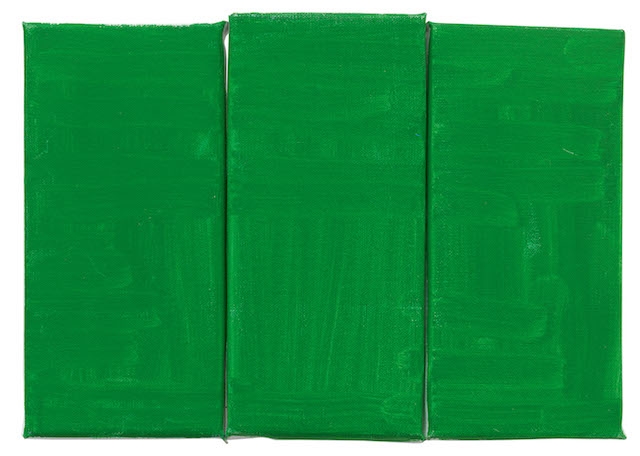The grandest collating thus far of works by this painter’s painter par excellence – some 100 paintings, watercolours and works on paper from the 1960s to his death in 2012 – oeuvre isn’t a typically straightforward and chronological retrospective. Appropriately, given the urbane twistiness of Raoul De Keyser’s paintings, which hover soulfully between representation and psychic landscape, it’s more elliptical than that, its centrepiece being a constructed, oddly angled room-within-a-room that shows how the Deinze, Belgium-born artist returned to and reworked motifs over the years: a monkey puzzle tree, for example, or an uneasy pair of rectangles. Yet despite its cyclical approach to time, the exhibition does open with a reconstruction of De Keyser’s eureka moment at the tail-end of the 1960s.
Up to that point – as a prefatory roomful of works demonstrates – he’d spent half a decade exploring a post-Matissean intimist realm, making small, loosely brushed, strongly structural studies of window frames and greenery beyond, fragments of campsites, schematic dogs, etc, the outlines steadily thickening until they bordered on Pop and turned into freestanding shallow boxes. Around 1968, though, De Keyser started paying attention to a football field near his house, taking photographs as sources and composing tightly in the frame, then painting goalposts and chalk lines in closeup until they bordered on abstraction while still being clearly, drolly, the worldly things they were, the chalk marks on grass situated as sporty parallels to the painter’s process of decorating a square. Bathetic cues like football socks hung around awhile, but within a few years De Keyser was deep into an economical language of simple lines on plain grounds whose charm, intelligence and oblique emotional pull are easy to see but hard to describe, except to say that he was able to invest gnomic brushmarks with a mixture of frayed casualness and consistent right placement that feels both very human and reflects a man playing a difficult game at a very high level.
De Zandvio (Sand Flea)(1976) radiates white curves across a dark grey ground like tightly nested giant commas; it has something in common with Frank Stella’s early work, but quivers equivocally in a way alien to the American. The four-part Tegendraads (Against the Grain) (1978) barely catches little yellow, blue and red marks, like sticking plasters, as they float towards the edge of the canvas and, in the fourth, disappear, replaced by some stripy underpainting. What’s going on here feels like an event, a process, plaintive and somehow funny, but beyond that it’s up to you. Just as this work is in conversation with Minimalism, during the 1980s De Keyser clearly noted what was going on: some of his canvases from this era are close to Richter, especially in polychrome palette, though the latter wouldn’t make a painting with the tug of P.R. (Obstakel) (P.R. Obstacle) (1990), where horizontal brushing on a mustardy ground seems to push even further apart the green and red blocks veering into or out of the frame.
During the 1990s De Keyser grew looser, more prone to blats and smudges, though his touch – at least in this sizeable cherry-picking – is remarkably consistent. In Untitled (Speed) (1995), four overlapping olive rectangles enter an off-white arena stage left, then are fuzzed by a bit of bravura overbrushing in a lighter, related shade. Things are often going somewhere in these paintings, you notice: they’re only here for the moment. In 1984, the artist’s wife died; he continued painting and the loss shades the ensuing works once you hear of it. Yet an air of mortality hangs around many of his compositions, feinting when you try to grasp it; the paintings turn consolingly playful. At the end, neatly, in a wall of small paintings incorporating collage, De Keyser returns to the football pitch: in one image, a player lies on the pitch, his head on a white line, exhausted, asleep, maybe dead. Someone once said – I paraphrase – that art should feel like the logical endpoint of a thinking process, but you don’t know what that process was. In oeuvre, you see that demonstrated a hundred times over.
Raoul De Keyser: ouevre at SMAK, Ghent, 22 September – 27 January
From the January & February 2019 issue of ArtReview
